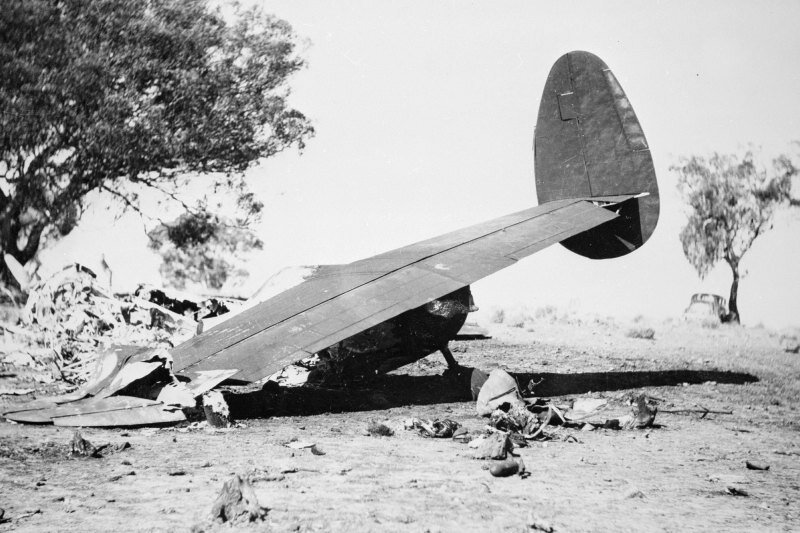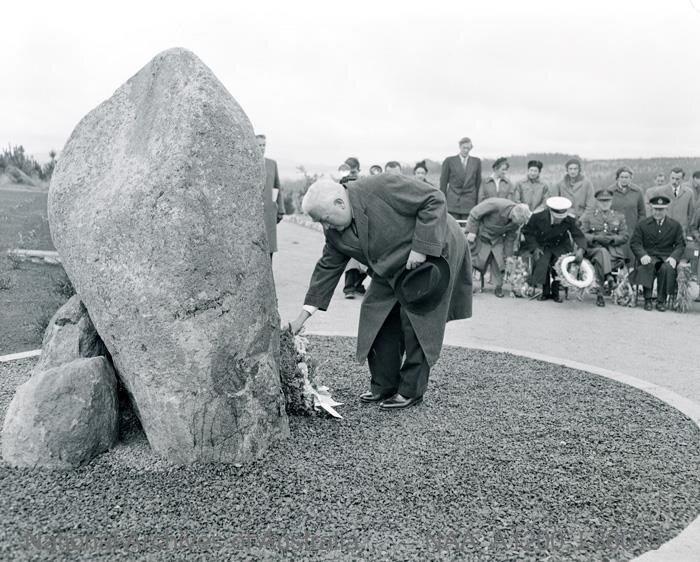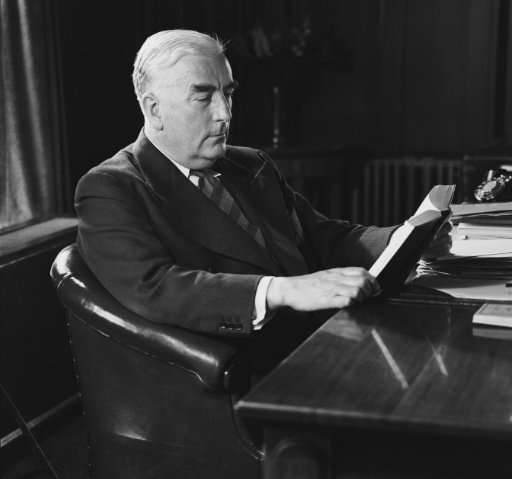On this day, 13 August 1940, as bombs were falling on the Imperial Capital of London during the Battle of Britain, Australians experienced their own airborne calamity far closer to home. Air and Civil Aviation Minister James Fairbairn was flying into Canberra from Melbourne to attend an urgent Cabinet meeting to discuss a telegram from Churchill conveying his views on what the Australians saw as their number one danger; the prospect of war with Japan. Such Ministerial flights were a new phenomenon, and the aircraft was one of just four Lockheed Hudsons in the RAAF to have been equipped with passenger seating. The chance to get to Canberra with unprecedented speed was thus seized upon, not only by Fairbairn but by the Minister for the Army Geoffrey Street, Vice-president of the Executive Council and Minister in charge of Scientific and Industrial Research Henry Gullet, and the Chief of the General Staff Cyril Brudenell White. As the plane began its descent towards the Canberra Aerodrome something went critically wrong. Witnesses reported that the plane initially circled the airfield then rose and went south, disappearing below a tree-dotted hill, before bursting into flames. All passengers onboard were killed instantly, and the Menzies Government, already dealing with the tremendous burden of organising the war effort, was thrown into turmoil.
It was a national tragedy, utterly unequalled in Australian political history. Never before nor since has so much political experience and authority vanished in the blink of an eye. For Prime Minister Robert Menzies it was an almost unfathomable setback. Menzies had been grappling with the enormous task of getting Australia ready for war, both the immediate war with Nazi Germany and the almost inevitable Asian conflict that loomed so large on the horizon. In that task the men aboard that fateful flight had been allies of tremendous importance. Fairbairn, Street, and Gullet had been some of his closest supporters in what was otherwise a heavily fractured government Menzies had inherited from the deceased Joseph Lyons.
For author Andrew Tink it was The Plane Crash That Destroyed A Government, helping to precipitate a poor showing for the United Australia Party at the 1940 election and Menzies’ resignation, amidst Coalition infighting, the next year. Historian Paul Hasluck wrote that ‘The loss of any one of these men alone would have weakened the Ministry and Parliament. The loss of the three together tore a hole in the fabric of government.’ Menzies was to spend the next few years in the political wilderness, and the trajectory of Australian history was altered forever.
Tink’s argument, presented in the 2013 book Air Disaster Canberra alongside a fascinating account of how Gullet, Fairbairn and Street represented the ANZAC generation taking the reins of government, is an enticing nugget of counterfactual history. While it may be that the disaster momentarily created some sympathy for a government that was already being heavily criticised by the press, Tink is able to point to the fact that at the 1940 election Gullet’s seat was won by an independent who ultimately voted to oust the Coalition Government. Without the loss of the popular local member, it is highly likely that this crucial seat would have stayed in government hands. Whatever sympathy the tragedy attracted was fleeting regardless, with many in the press calling on Menzies to seize the ‘opportunity’ created by the empty Cabinet positions to launch a new party. Menzies was appalled at this grotesque opportunism, and complained that he was ‘sniped at and loftily admonished by every leading newspaper except the Melbourne “Age” until I sometimes curse the day I entered politics.’ Menzies would later write that ‘frankly, I don’t believe that… my rejection and, as I felt at the time, my humiliation would have happened if these three men had lived’.
Tink’s thesis is not without controversy, however. Cameron Hazlehurst has argued that ‘the overwhelming facts about Menzies’ “humiliation” were that he had led the UAP to a disastrous election result, and that he had antagonised the press and too many of his own party… the vote of one or two Independents in Parliament would never have been crucial if so many men had not previously lost their seats and so many others deserted him’. As with any exercise in counterfactual history, we will never really know how things would have turned out had the flight gone smoothly. Nevertheless, it was certainly a crucial moment in Australian political history, and one which had a profound psychological impact on Menzies, a man who had previously been accused of taking his colleagues for granted.
Further Reading:
Andrew Tink, Air Disaster Canberra: The Plane Crash That Destroyed A Government (New South Publishing, 2013).
Cameron Hazlehurst, Ten Journeys to Cameron’s Farm: An Australian Tragedy (ANU Press, 2013).
Paul Hasluck, The Government and the People, 1939–1941 (Australian War Memorial, 1952).
Sign up to our newsletter
Sign up for our monthly newsletter to hear the latest news and receive information about upcoming events.



